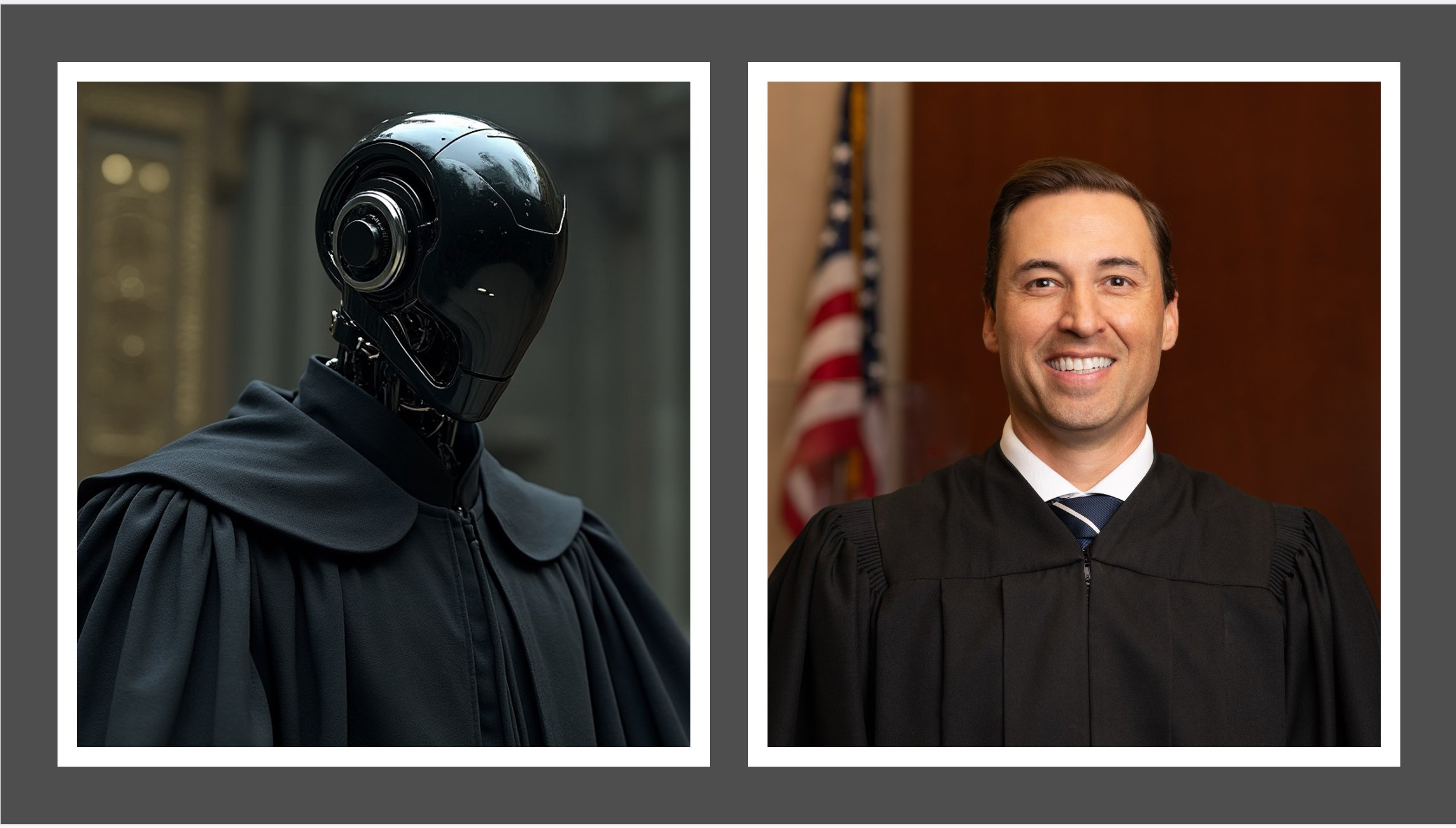The Nuanced Question of Judges Using AI: One Judge's Perspective
As a judge with expertise in legal technology and modernizing the justice system, I'm frequently asked whether I believe judges should be using artificial intelligence (AI). This question, while seemingly straightforward, requires careful consideration and clarification.
When confronted with this inquiry, I often respond by asking for specifics. Are we talking about Generative AI (GenAI) in particular? Is the intended use for research purposes, case management, or drafting opinions? If it's for drafting opinions, are we considering feeding an AI system with briefs and asking it to draft an opinion independently, or is it more about a judge directing an AI system like a law clerk—providing the answer, relevant case law, pertinent facts, and guidance for a first draft? Understanding these details helps assess the appropriateness and implications of AI use in each context.
In principle, I'm not opposed to judges using AI, especially in the scenario where a judge actively guides the AI, much like they do on a daily basis with their assistants and law clerks. A well-trained judge who understands how to effectively use Large Language Models (LLMs) could leverage AI as a powerful tool for efficiency and consistency in the drafting process. AI can also assist in managing vast amounts of information, highlighting relevant precedents, and suggesting language that aligns with legal standards. However, my current stance is that we're not fully ready for judges using GenAI to draft opinions—at least not yet.
The cornerstone of any justice system is trust. Litigants, lawyers, and the public must have confidence in the integrity and fairness of judicial proceedings. Presently, the idea that an AI system played a role in drafting a legal opinion—even under a judge's close supervision—could undermine this trust. Many people harbor concerns about AI, ranging from fears about its inability to understand nuanced human situations to doubts about the transparency of its processes. Introducing AI into the opinion-drafting process, even in a limited capacity, could lead to skepticism about the fairness and human consideration involved in judicial decisions.
To address these concerns, education and transparency are essential. By openly communicating how AI is utilized or being considered within the judiciary, we can demystify the technology and alleviate unfounded fears. Public forums, informational campaigns, and collaboration with members of the bar can help the public understand that AI, when used responsibly, could be a tool that supports judges rather than replaces their judgment. Transparency about the extent and manner of AI usage may help build trust.
Developing and implementing ethical guidelines for AI use in the judiciary is also paramount. Establishing clear protocols and oversight mechanisms ensures that AI is employed responsibly and ethically. These guidelines should address accountability, defining that judges retain ultimate responsibility for their decisions, with AI serving strictly as an assistive tool. Maintaining openness about AI's role in judicial processes will be crucial for adoption.
This doesn't mean that AI has no place in the legal system today. On the contrary, AI tools will increasingly play an important role in legal research, case management, and other aspects of the legal process. As public understanding and acceptance of AI grow, and as the technology itself improves, we may even reach a point where using AI in drafting opinions becomes more acceptable. Technological advancements are rapidly addressing current AI limitations, such as better natural language understanding and more sophisticated contextual awareness, making them more suitable as judicial assistants.
With these potential advancements in mind, it's crucial to consider the practical steps we can take today to prepare for a future where AI plays a more significant role in the judiciary.
To move towards this future without compromising public trust, we can take several actionable steps. Implementing controlled pilot programs that use AI in limited judicial functions, with thorough evaluation and public reporting of outcomes, could help demonstrate the benefits and limitations of AI tools. Involving legal professionals, technologists, and other justice system partners in discussions and decision-making processes about AI integration ensures that multiple perspectives are considered.
Developing training programs for judges and court staff on AI literacy will help them understand the capabilities and limitations of the technology. Hosting forums and publishing materials to educate the public about how AI can enhance the justice system, emphasizing the retention of human oversight, can foster greater acceptance. Working with legislative bodies to create laws and regulations that govern AI use in the judiciary ensures alignment with societal values and legal standards.
It's important to emphasize that AI, in the context of judicial work, is intended to assist judges—not replace them. AI can handle repetitive tasks, analyze large volumes of data, and provide insights that support a judge's decision-making process. The ultimate authority and responsibility remain with the human judge, who applies legal reasoning, ethical considerations, and empathy—qualities that AI cannot replicate.
While I'm optimistic about the future potential of AI in the legal system, including its use by judges, we must approach this integration cautiously, ethically, and with full transparency. The justice system's integrity depends on maintaining public trust, and any technological advances must be implemented with this paramount concern in mind.


